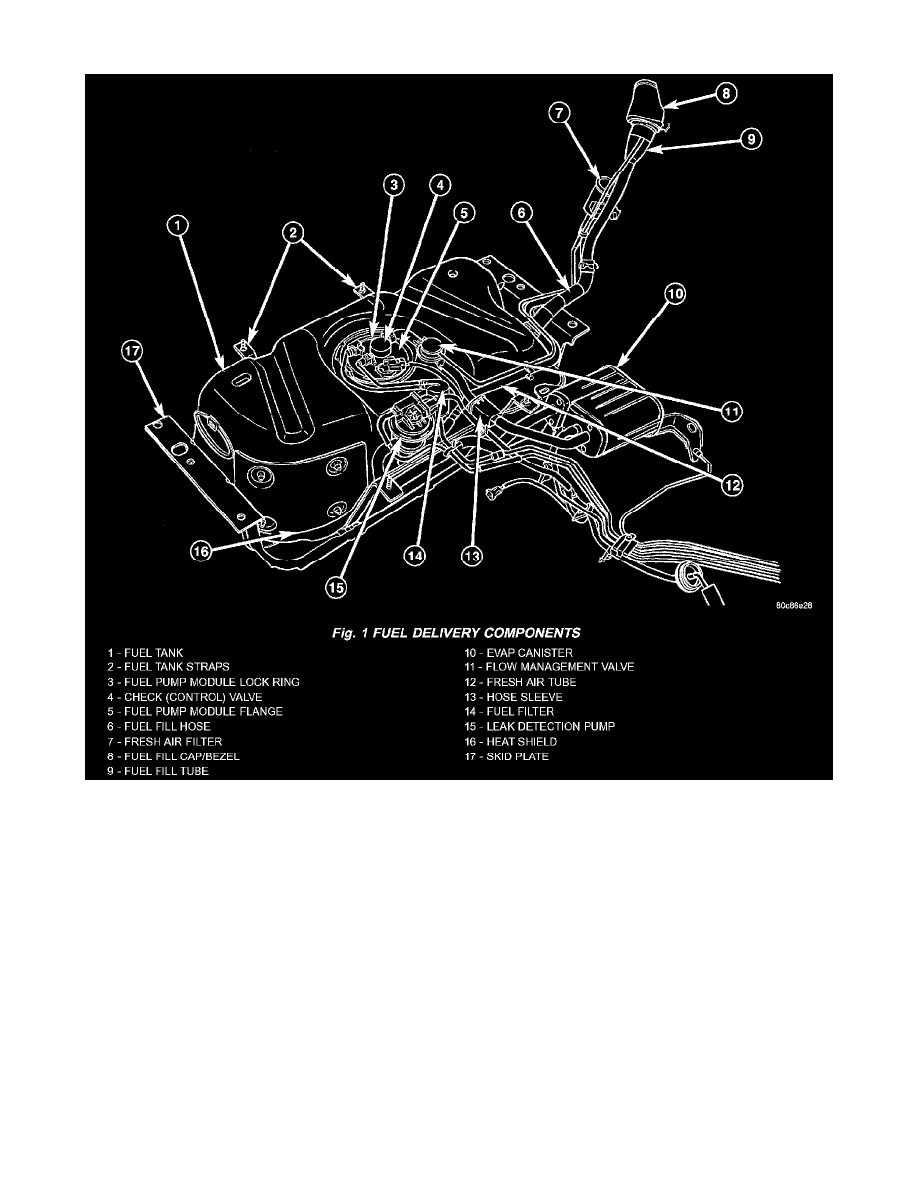Liberty Sport 4WD L4-2.4L VIN 1 (2002)

Leak Detection Pump: Description and Operation
Fig.1 Fuel Delivery Components
The Leak Detection Pump (LDP) is bolted to the front of the fuel tank.
The Leak Detection Pump (LDP) is used only with certain emission packages.
The LDP is a device used to detect a leak in the evaporative system.
The pump contains a 3 port solenoid, a pump that contains a switch, a spring loaded canister vent valve seal, 2 check valves and a spring/diaphragm.
Immediately after a cold start, engine temperature between 40°F and 86°F, the 3 port solenoid is briefly energized. This initializes the pump by drawing
air into the pump cavity and also closes the vent seal. During non-test test conditions, the vent seal is held open by the pump diaphragm assembly which
pushes it open at the full travel position. The vent seal will remain closed while the pump is cycling. This is due to the operation of the 3 port solenoid
which prevents the diaphragm assembly from reaching full travel. After the brief initialization period, the solenoid is de-energized, allowing atmospheric
pressure to enter the pump cavity. This permits the spring to drive the diaphragm which forces air out of the pump cavity and into the vent system. When
the solenoid is energized and de-energized, the cycle is repeated creating flow in typical diaphragm pump fashion. The pump is controlled in 2 modes:
-
Pump Mode: The pump is cycled at a fixed rate to achieve a rapid pressure build in order to shorten the overall test time.
-
Test Mode: The solenoid is energized with a fixed duration pulse. Subsequent fixed pulses occur when the diaphragm reaches the switch closure
point.
